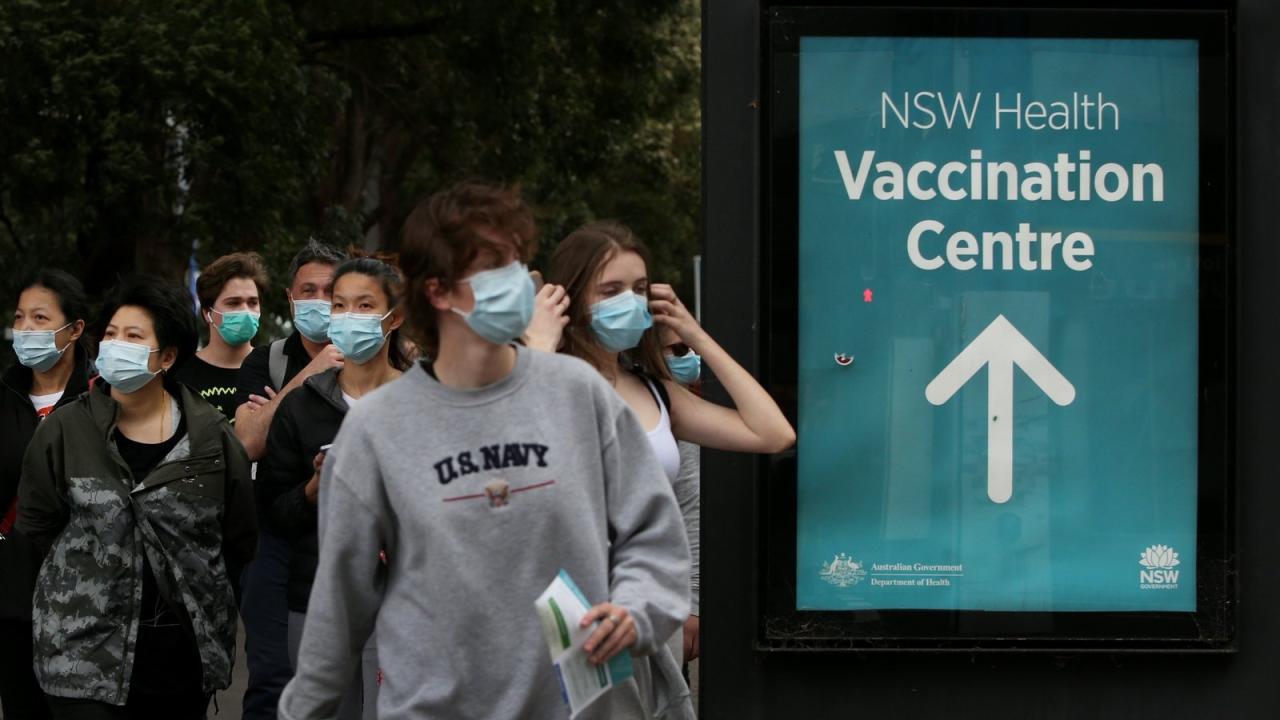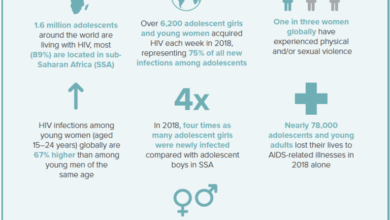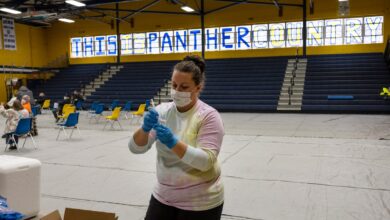
What happened the last time we had a vaccine during a pandemic? This exploration delves into historical vaccine deployments, examining past pandemics, vaccine efficacy and safety, public health responses, societal impacts, and the crucial lessons learned. We’ll analyze timelines, compare strategies, and discuss the factors influencing vaccine acceptance, ultimately aiming to inform future pandemic preparedness.
A deep dive into past pandemics reveals a complex interplay of scientific advancements, public health strategies, and societal responses. Examining these historical events can offer valuable insights into how we can better prepare for and respond to future health crises.
Historical Context of Past Pandemics and Vaccines
The development and deployment of vaccines have played a crucial role in combating infectious diseases throughout history. Understanding the historical context of past pandemics and vaccine responses provides valuable insights into the challenges and successes of public health interventions. This exploration reveals patterns, successes, and failures in vaccine strategies and public health responses, ultimately informing our approach to contemporary pandemic challenges.A significant number of pandemics have shaped the course of the 20th and 21st centuries.
Examining these events allows us to better comprehend the complexities involved in global health crises.
Timeline of Major Pandemics
The 20th and 21st centuries have witnessed several devastating pandemics, each with unique characteristics and impacts. A comprehensive understanding of these events necessitates a clear timeline, which provides context for the subsequent development and deployment of vaccines.
- 1918-1919: Spanish Flu Pandemic: This pandemic, characterized by high mortality rates and rapid global spread, highlighted the urgent need for effective public health measures. The pandemic impacted nearly every corner of the world, causing significant disruptions to social and economic life.
- 1957-1958: Asian Flu Pandemic: The Asian Flu pandemic, driven by a new influenza virus, caused a substantial global health crisis, and demonstrated the importance of international collaboration in pandemic response. This event marked a significant step towards a more coordinated global effort in the face of infectious disease outbreaks.
- 1968-1969: Hong Kong Flu Pandemic: The Hong Kong Flu pandemic, another influenza outbreak, resulted in a global surge in cases, emphasizing the ongoing threat of influenza viruses and the need for continuous surveillance and response mechanisms.
- 2009-2010: H1N1 Pandemic (Swine Flu): The H1N1 pandemic underscored the potential for novel influenza viruses to emerge and spread rapidly. The swift development and deployment of vaccines played a critical role in mitigating the pandemic’s impact.
- 2019-Present: COVID-19 Pandemic: The COVID-19 pandemic, caused by the SARS-CoV-2 virus, resulted in a global health crisis. The rapid development and deployment of multiple vaccines were crucial to mitigating the pandemic’s severity and mortality.
Vaccine Development and Deployment
The development and deployment of vaccines have evolved significantly over the past century, influenced by advancements in scientific understanding and technological capabilities.
- Spanish Flu: Vaccines were not widely available or effective against the Spanish Flu. Public health measures focused on sanitation, quarantine, and isolation. The absence of a widely effective vaccine during the Spanish Flu pandemic serves as a stark reminder of the challenges in developing effective countermeasures for emerging pathogens.
- Subsequent Pandemics: The development of vaccines for influenza and other pathogens saw rapid advancements, with the development of mRNA vaccines significantly accelerating the process in the case of COVID-19. This contrasted with the slower pace of development in earlier pandemics. Key milestones included the development of effective influenza vaccines and the use of newer technologies like mRNA.
Public Health Responses
Public health responses to pandemics have evolved over time, with increasing emphasis on international collaboration and global surveillance. Different approaches were employed in different pandemic contexts, reflecting varying levels of preparedness and resource allocation.
- Historical Approaches: Early approaches to pandemic response often relied on measures like quarantine and isolation. These strategies were implemented in response to various pandemics, demonstrating an early understanding of the importance of controlling disease spread. While effective in some cases, they had limitations, especially in a globally interconnected world.
- Modern Approaches: Modern pandemic responses often involve a combination of measures, including vaccination campaigns, public health messaging, and enhanced surveillance. The COVID-19 pandemic highlighted the need for robust international collaboration and rapid vaccine development. These modern approaches were crucial in mitigating the pandemic’s spread and severity.
Societal and Political Factors
Societal and political factors play a crucial role in vaccine acceptance and rollout during pandemics. These factors influence public trust, willingness to comply with public health measures, and the overall effectiveness of vaccination campaigns.
Remember the vaccine frenzy during the last pandemic? While everyone scrambled for shots, some were also popping multivitamins, hoping for an extra boost. Unfortunately, researchers are now questioning the effectiveness of multivitamins, saying they don’t offer much in the way of health benefits. This article delves deeper into the topic. Regardless of the vitamin supplements, the vaccine rollout still had a huge impact on the pandemic’s trajectory, showcasing how crucial widespread vaccination can be.
- Public Perception: Public perception of vaccines has varied across different pandemics, influenced by factors like misinformation, distrust in government institutions, and personal beliefs. Public health campaigns are essential to address these factors and build trust in vaccines. Public health messaging is essential in promoting trust in vaccines and public health measures.
- Political Considerations: Political considerations, such as political ideologies and agendas, can significantly impact vaccine rollout and acceptance. Government policies and strategies related to vaccination often reflect political priorities and societal values. Political leadership and decision-making play a vital role in pandemic response and vaccine deployment.
Comparative Analysis of Pandemics
A comparative analysis of the severity, duration, and global impact of different pandemics reveals valuable insights.
| Pandemic | Severity | Duration | Global Impact |
|---|---|---|---|
| Spanish Flu | High | 1918-1919 | Significant loss of life globally |
| Asian Flu | Moderate | 1957-1958 | Widespread cases, impacting global health |
| Hong Kong Flu | Moderate | 1968-1969 | Global surge in cases |
| H1N1 | Moderate | 2009-2010 | Significant global impact, but less severe than earlier pandemics |
| COVID-19 | High | 2019-Present | Unprecedented global disruption and loss of life |
Vaccine Efficacy and Safety During Past Pandemics
Understanding the efficacy and safety of vaccines during past pandemics provides crucial insights for current and future public health responses. Historical data, while not perfectly analogous to modern situations, offers valuable lessons about vaccine development, deployment, and monitoring. This examination will explore the effectiveness of vaccines in preventing disease, documented safety profiles, safety monitoring methods, and the correlation between vaccination rates and disease incidence in various populations.
Efficacy of Vaccines in Preventing Disease
The effectiveness of vaccines in past pandemics varied depending on factors such as the specific viral strain, the age of the population, and the vaccine’s formulation. Some vaccines demonstrated high efficacy in preventing severe disease and hospitalization, while others were less effective, especially against emerging variants. For example, the smallpox vaccine was highly effective in eradicating the disease, while influenza vaccines have shown variable effectiveness depending on the specific strain circulating.
Documented Safety Profiles
Detailed safety profiles for vaccines used during past pandemics include documented adverse events and long-term effects. Early post-vaccination monitoring systems often lacked the sophistication of modern approaches, but these historical data still offer insights into the types of reactions observed and their frequency. Careful analysis of these data is crucial to understanding potential risks and benefits associated with vaccination.
Reports from different historical periods highlight the importance of rigorous safety monitoring.
Methods Used to Monitor Vaccine Safety
The methods used to monitor vaccine safety during past pandemics varied, reflecting the evolving understanding of vaccine safety. Early monitoring often relied on spontaneous reporting systems, which while important, had limitations in capturing the full scope of potential adverse events. As public health understanding progressed, more sophisticated surveillance methods were implemented, including epidemiological studies and randomized controlled trials.
These advancements allowed for a more comprehensive evaluation of vaccine safety. The evolution of these monitoring methods highlights the continuous improvement in vaccine safety monitoring.
Vaccination Rates and Disease Incidence
Vaccination rates and disease incidence during past pandemics show a clear correlation. Higher vaccination rates in a population often corresponded with lower disease incidence. This relationship demonstrates the crucial role of vaccination in controlling the spread of infectious diseases. Examples from past outbreaks can demonstrate the direct link between the percentage of the population immunized and the overall number of reported cases and severity.
Key Safety Concerns and Efficacy Data
| Pandemic | Vaccine | Key Safety Concerns | Efficacy Data (Example) |
|---|---|---|---|
| Smallpox | Smallpox Vaccine | Post-vaccination complications, such as myocarditis, were sometimes observed. | >90% efficacy in preventing smallpox infection. |
| Influenza | Influenza Vaccines (various types) | Local reactions, such as pain and redness at the injection site, were common. Some individuals experienced fever. | Efficacy varied depending on the specific strain, generally ranging from 40-60% in preventing infection. |
| Polio | Polio Vaccine (inactivated and oral) | Very rare cases of vaccine-associated paralytic polio with oral vaccine. | High efficacy in preventing polio, with the oral vaccine showing slightly higher coverage in some populations. |
This table provides a concise overview of safety concerns and efficacy data for vaccines used during selected historical pandemics. It is essential to remember that the specifics can vary greatly depending on the specific vaccine, its formulation, and the characteristics of the population being vaccinated.
Public Health Responses and Infrastructure

Past pandemics have highlighted the critical role of robust public health infrastructure and strategies in mitigating the spread of infectious diseases. Effective responses, encompassing testing, isolation, contact tracing, and global collaboration, are essential for containing outbreaks and protecting populations. This section examines the public health measures employed during past pandemics, comparing and contrasting the effectiveness and preparedness of various countries.The efficacy of public health responses hinges on the availability of adequate resources, including trained personnel, testing capacity, and communication channels.
Understanding past successes and failures can inform current and future pandemic preparedness, enabling more efficient and effective responses to emerging threats.
Public Health Strategies Employed
Public health strategies have varied across different pandemics, adapting to the specific characteristics of each disease. Key strategies typically included testing, isolation, and contact tracing, though their implementation and efficacy have differed significantly. Early detection through widespread testing allows for rapid isolation of infected individuals and the identification of contacts for quarantine. Tracing the chains of transmission is crucial to contain outbreaks and prevent further spread.
- Testing: Early and widespread testing is crucial for identifying cases, enabling prompt isolation, and preventing further transmission. The availability and accessibility of testing significantly influence the success of pandemic response. Rapid and reliable diagnostic tests are essential to facilitate timely interventions. For instance, the development of rapid antigen tests during the COVID-19 pandemic allowed for more efficient screening and faster isolation protocols.
- Isolation: Isolation of infected individuals is a fundamental public health measure. This limits the transmission of the pathogen to susceptible individuals. Strict adherence to isolation protocols, enforced through community engagement and supportive measures, is vital for containing the spread of the disease.
- Contact Tracing: Contact tracing involves identifying and monitoring individuals who have come into contact with infected persons. This process is crucial for interrupting chains of transmission. Effective contact tracing requires efficient communication channels, trained personnel, and robust data management systems. For example, in some past pandemics, limited resources or resistance to contact tracing hindered the efforts to contain the spread of the disease.
Global Collaboration and Information Sharing
International collaboration and information sharing are crucial during pandemics. Sharing data, best practices, and research findings across borders can facilitate a coordinated global response. Effective communication channels, facilitating the exchange of real-time information, are vital for preventing the spread of misinformation and fostering trust in public health authorities.
- Information Sharing: Rapid and transparent information sharing is vital for guiding public health responses and coordinating global efforts. Effective communication strategies, including clear public health messages and accessible resources, can enhance public understanding and cooperation during pandemics.
- International Cooperation: International collaboration and coordination play a critical role in addressing pandemics. Sharing data, expertise, and resources across borders can accelerate the development of effective treatments and vaccines, as well as enhance the efficiency of public health responses.
Infrastructure and Resources for Vaccine Distribution
Vaccine distribution and administration require robust infrastructure, including logistical networks, trained personnel, and cold chain facilities. The availability and accessibility of these resources directly impact the effectiveness of vaccination campaigns.
- Logistics: The efficient transportation and storage of vaccines, especially in remote areas or under challenging conditions, is critical for achieving high vaccination coverage. This requires well-established supply chains and reliable cold chain infrastructure. During past pandemics, inadequate infrastructure in some regions resulted in limited vaccine access, hindering effective vaccination campaigns.
- Personnel: A sufficient number of trained healthcare workers, including vaccinators and support staff, is necessary for administering vaccines efficiently and effectively. Training programs and continuous professional development are vital for ensuring high-quality vaccination services.
Comparison of Infrastructure and Preparedness Across Countries
The preparedness and response to pandemics vary significantly across countries, reflecting differences in healthcare infrastructure, public health systems, and resource availability. Factors such as the level of investment in public health infrastructure, the availability of trained personnel, and the capacity for rapid response can significantly impact the success of pandemic management.
Remember the vaccine rollout during the last pandemic? It was a whirlwind of excitement and anxiety, wasn’t it? Looking at the shift in consumer attitudes towards alternative nicotine products like those that use heat-not-burn technology, will consumers warm up to heat not burn tobacco is a fascinating parallel. Ultimately, the key takeaway from both experiences is the profound impact of public health crises on consumer behavior, and how rapidly attitudes can change.
| Country | Public Health Measures Taken | Effectiveness |
|---|---|---|
| Country A | Implemented widespread testing, robust contact tracing, and strict isolation measures. | High effectiveness in containing the spread of the disease. |
| Country B | Limited testing capacity, inadequate contact tracing, and inconsistent isolation protocols. | Lower effectiveness in containing the spread of the disease. |
Societal Impacts and Public Perception: What Happened The Last Time We Had A Vaccine During A Pandemic

Public trust and understanding of vaccines are crucial for successful vaccination campaigns. Past pandemics have shown that societal factors, media portrayals, and public health communication strategies significantly influence vaccine acceptance. Analyzing these dynamics provides valuable insights for future pandemic responses. Understanding the interplay of these elements is critical to effectively addressing vaccine hesitancy and fostering public confidence.Public perception of vaccines has been shaped by a complex interplay of factors, including pre-existing beliefs, personal experiences, and the information environment.
Misinformation and distrust can significantly hinder vaccination efforts, even during severe public health crises. Understanding the specific factors driving vaccine hesitancy and acceptance is essential for tailoring effective communication strategies.
Public Understanding and Acceptance of Vaccines
Public understanding of vaccines has varied significantly across different historical periods and pandemics. In some cases, there was widespread acceptance and swift uptake, while in others, vaccine hesitancy and resistance were prominent. This variability highlights the multifaceted nature of public response to vaccines.
Remember the last pandemic and the vaccine rollout? It was a whirlwind of hope and frustration, wasn’t it? Similar to how trying to control kids’ behavior with screen time often backfires, leading to more screen time, this phenomenon highlights a common pattern in human behavior. Ultimately, the vaccine rollout had its hiccups, just like many well-intentioned efforts.
Societal Factors Influencing Vaccine Hesitancy or Acceptance
Numerous societal factors can influence vaccine hesitancy or acceptance. These factors include pre-existing health beliefs, socioeconomic status, cultural norms, and the influence of trusted figures like religious leaders or community members. These factors often intersect to create a complex tapestry of public opinion.
Role of Media and Communication in Shaping Public Perception
Media plays a significant role in shaping public perception of vaccines. News reports, social media posts, and online forums can spread both accurate information and misinformation. The way in which the media frames the vaccine issue significantly impacts public opinion and potentially drives vaccine hesitancy or acceptance.
Public Health Communication Strategies, What happened the last time we had a vaccine during a pandemic
Public health officials employed various communication strategies during past pandemics to address vaccine hesitancy. These strategies often involved building trust, addressing concerns, and providing clear and consistent information through multiple channels.
Summary of Communication Strategies Used by Public Health Officials
Strategies used by public health officials have included:
- Emphasizing the safety and efficacy of vaccines through clear, evidence-based communication.
- Actively addressing concerns and misconceptions through targeted public health campaigns.
- Engaging with community leaders and trusted figures to promote vaccine acceptance.
- Utilizing multiple communication channels, including social media, community events, and traditional media outlets.
- Highlighting success stories and testimonials to build confidence in the vaccines.
These strategies, combined with understanding of local context and trust factors, are crucial to building public confidence.
Table: Public Opinion on Vaccines
| Country | Time Period | Public Opinion (Summary) |
|---|---|---|
| United States | 2010s | Significant vaccine hesitancy, particularly regarding specific vaccines like MMR. This was often fueled by online misinformation and concerns about side effects. |
| United Kingdom | 2010s | Generally high acceptance of vaccines, but some pockets of hesitancy, especially concerning specific vaccines. |
| Germany | 2010s | Concerns about vaccine safety were raised, impacting acceptance rates of some vaccines. |
| India | 2020s | High acceptance of COVID-19 vaccines, though challenges persisted in certain regions due to socioeconomic factors and misinformation. |
Note: This table provides a simplified overview. Public opinion is complex and varies within and between countries. Additional factors should be considered when interpreting the data.
Lessons Learned and Future Implications
The historical record of pandemics reveals crucial lessons about vaccine development, deployment, and public health responses. Analyzing past successes and failures provides invaluable insights for preparing for future outbreaks. Understanding the factors that influenced vaccine acceptance and effectiveness during past crises can guide future policies, ensuring a more coordinated and effective global response.Past experiences demonstrate that a proactive approach to vaccine development, coupled with robust public health infrastructure, is critical in mitigating the devastating impact of pandemics.
The ability to adapt quickly and adjust strategies based on emerging data is equally important.
Key Lessons from Past Pandemic Vaccine Experiences
Understanding the nuances of past pandemic vaccine experiences provides crucial insights for future preparedness. These experiences highlight the importance of anticipating diverse needs, recognizing varied community perceptions, and adapting strategies in real-time. The need for transparent communication and robust public health infrastructure becomes evident in these analyses.
- Prioritization and Sequencing: Past experiences underscore the importance of carefully prioritizing vaccine allocation. Strategies should account for high-risk populations and vulnerable groups. The experience of the 2009 H1N1 pandemic highlighted the challenges of equitable distribution and the need for adaptable plans. The need for robust logistics and efficient distribution systems becomes a critical element in such circumstances.
- Addressing Vaccine Hesitancy: Public perception and trust play a pivotal role in vaccine acceptance. Transparent communication and clear explanations of vaccine benefits and safety are essential to build confidence. Misinformation and distrust can significantly impede vaccine uptake. Strategies for proactively addressing these concerns, including community engagement and trusted messengers, are crucial.
- Adaptability and Agility: The evolving nature of pathogens necessitates flexible vaccine development and deployment strategies. The ability to rapidly adapt to emerging variants or new information is critical. The COVID-19 pandemic highlighted the need for nimble responses to evolving situations.
- Global Collaboration: International cooperation is essential for effective vaccine development and deployment. Sharing data, resources, and expertise across borders facilitates a more comprehensive global response. The potential for global collaborations to accelerate vaccine production and distribution is crucial in mitigating the impact of future pandemics.
Implications for Future Pandemic Responses
The lessons learned from past pandemics have significant implications for future pandemic preparedness. These experiences demonstrate the need for proactive planning, robust infrastructure, and a strong focus on public trust and communication. Building resilience in public health systems is crucial to navigating future crises.
- Investment in Vaccine Research and Development: Investing in research and development for new vaccines, particularly those targeting emerging pathogens, is paramount. This involves supporting innovative technologies and funding research into broad-spectrum vaccines.
- Strengthening Public Health Infrastructure: Robust public health infrastructure, including surveillance systems, laboratory capacity, and community engagement programs, is essential. This proactive approach can ensure rapid detection and response to emerging threats.
- Building Public Trust and Confidence: Transparent communication and engagement with the public are critical. Addressing misinformation and building trust in public health agencies is crucial to facilitate widespread vaccine acceptance.
Table of Critical Takeaways
| Pandemic | Key Vaccine Experience | Implications for Future Pandemics |
|---|---|---|
| 1918 Influenza Pandemic | Limited vaccine availability and understanding of virus. | Highlighting the importance of proactive vaccine development strategies and investment in research. |
| 1957 Asian Flu Pandemic | Early vaccine development and deployment but challenges in anticipating future mutations. | Importance of rapid response mechanisms and adaptable vaccine platforms. |
| 2009 H1N1 Pandemic | Rapid vaccine development but challenges in equitable distribution. | Need for efficient global vaccine distribution systems and strategies for prioritizing populations. |
| 2019 COVID-19 Pandemic | Accelerated vaccine development but challenges with vaccine hesitancy and variant emergence. | Importance of transparent communication and building trust with the public. Need for agile vaccine platforms capable of responding to evolving threats. |
Closure
In conclusion, studying past vaccine deployments during pandemics offers crucial insights for improving global pandemic preparedness. From the development of vaccines to public health responses and societal impacts, a comprehensive analysis allows us to learn from past successes and failures. These historical lessons can guide the creation of more effective and equitable vaccine strategies in the future.





